How to win first-time clients with a great first response
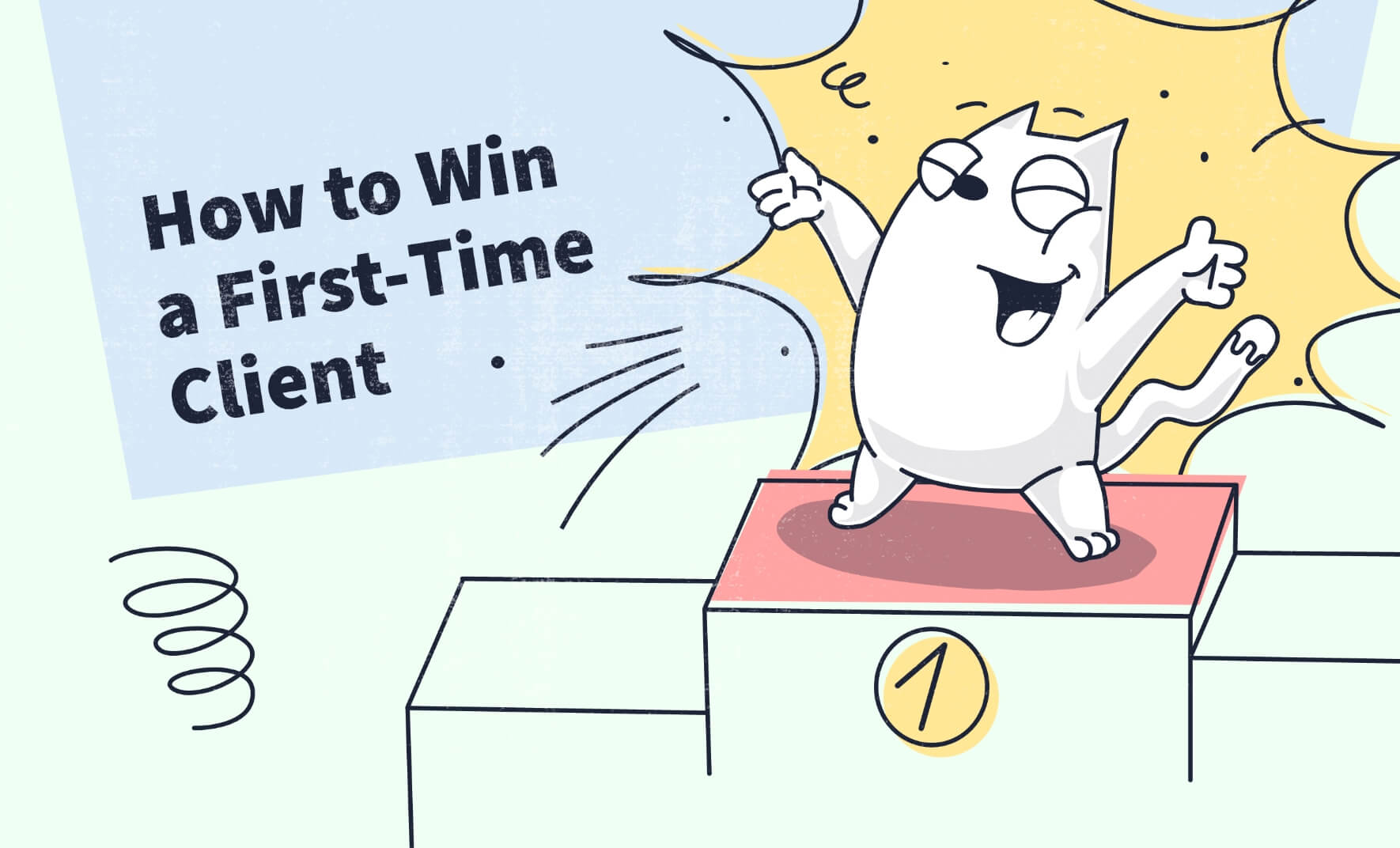
You’ve just got a request for a project quote from a completely new client. It’s good news, word is spreading. Maybe, hopefully, you’ve been recommended by another client. If this is the case, you’re one step closer to clinching a deal. Maybe, you are the only agency they’ve sent this request too and they are waiting excitedly for your reply. Stop dreaming! These are the best case scenarios but both kind of optimistic.
Much more likely is the reality that the client did some research online, realized there are many, many companies that offer the same service as you, and decided to send out a project request to a number of these agencies. The good news is that you are on the list of the chosen ones – you’ve got a chance, now you have to win the project! All the agencies are thinking the same, so how are you going to outperform your competitors?
The first reply you send is the most important communication you’ll have. This post tells you how you should respond, what you should include to give you the best chance of success in this competitive market. Little tips that make a large difference.
Reply Quickly
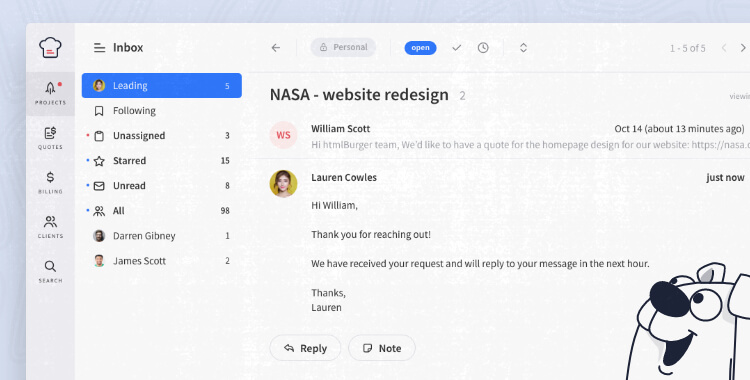
One of the most important things is the speed of response, so that’s why it’s here front and center. Reply as fast as you can, and we mean really fast, ideally in the first 5-30 minutes. Do this and your chances of getting this project will be way higher. Everything in business is ASAP, clients are in a hurry, they want things done yesterday, you need to meet or beat the deadlines. A super quick reply is a strong signal that you will be able to meet their vital deadlines.
As well as signaling your speedy potential, when the client has just sent the request, their mind is still on the project. They are fresh, willing, and hungry to get things started, the project is hot.
You order fast food when you are ready to eat, and you are hungry now! If your response is pinging into in their inbox before they’ve had time to move on, the chances of starting a dialogue and therefore eventually getting the project are super high. Plus once they are talking to you, they haven’t got time (or as much inclination) to keep sending out further quotes to your competitors.
Or you could relax, take things slowly…..we’ll get back to them after thinking about it, maybe in a couple of days. As the client, I’m thinking that you are disorganized, your communication isn’t good, perhaps you can’t really be bothered, at worst you are just plain rude. You may be lucky and I think… wow …they must be busy, but to be honest if you’re too busy to get back to me, you’re too busy to care about my project. And in the meantime, readers of this article are firing in their opening responses.
You’ve missed the boat. So the faster you reply, the better your chances are.
Pick the best time to reply

Okay, but suppose the client is in a different timezone and the request comes in at 11 pm (my time). Apparently working 24 hours a day isn’t an option – although your boss might not see it that way.
So, what are your best options? The best thing you can do is reply when the potential client will have time to read it.
Workout your client’s timezone, so you can calculate when his working day probably starts and ends. It’s guesswork to a certain extent but we can make some pretty good assumptions:
- His working day should be from 8-9 am till about 5-6 pm
- Depending on his job position, he will have different responsibilities, but usually, people spend the first few hours of the workday on routine tasks. So this is not the best time for you.
- If the project has a tight deadline (you can find this by reading the client’s message), he might be ready to prioritize and reply first to you. So this one is important
- The end of the working day is also not a good option, because this is time for checking progress on other projects, again for routine tasks.
- Lunch break is also not an option, which should be from 12 am-2 pm
- This leads us to two definite time windows, from 10-11 am till 12 am-1 pm and from 1-2 pm till 4-5 pm.
- And the earlier one is better.
Again, all of the above are assumptions, but you get the idea. The point here is to find the best time you think the client will be free for 5-20 mins so he can read your message and reply.
Short is sweet
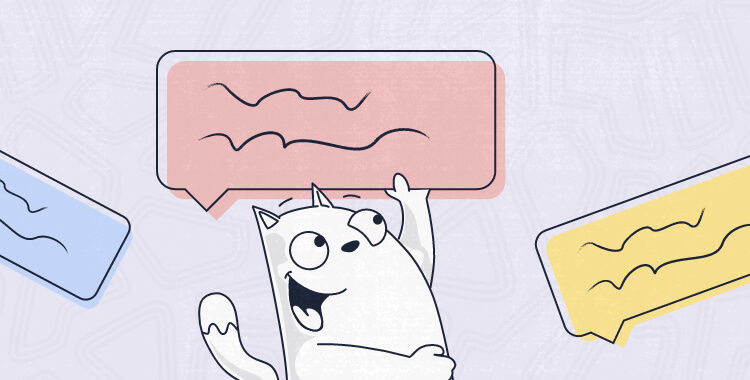
You’re replying quickly, so you should keep your first message as short as possible. This is not the time for vast swathes of detail. Remember, the point here is to get ahead of the game and reply before your competitors do. You can set up some predefined snippets (canned replies), but make sure they sound personal and appropriate for their project/company.
It’s a great idea to send a quick message that lets them know you’re looking at their project now and will get back to them in 10 minutes. In a busy bar, when you catch the eye of the barman, you know you are going to be served, so you’re happy to wait. This way the client will be pre-prepared for your response. Ready and waiting to check their email in the next minutes, so he’ll make the time for you. You’ve served up an appetizer, they are waiting for the main dish.
Don’t sound like a robot
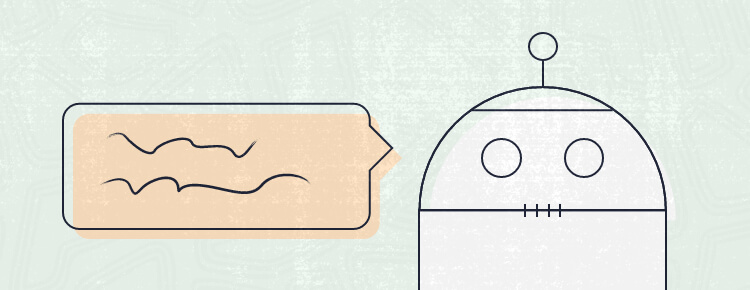
You are a human being, not a robot. If you’re using snippets, again, make sure it sounds personal because the last thing you want the client to think is that he is just another client for you. Make them feel like you’ve spent some time (even 10 minutes is enough ) checking their project and you’ve done some research about them.
Know who you’re talking to

Do some quick research about the client. How? Well, if the client’s email is from the company domain, you can check their website and find more info about their company and especially about the person who’s sent the mail – like what’s his position (if there is a team page), where is the company located (timezone), what are their working hours (if there is contact page), etc.
Knowing your audience should affect every communication. It’s a skill worth working on, worth reading up on, understanding who you’re talking to will help you change your style of writing. Take into account cultural differences too, and even non-native language differences.
Friendly – yes, too friendly – no
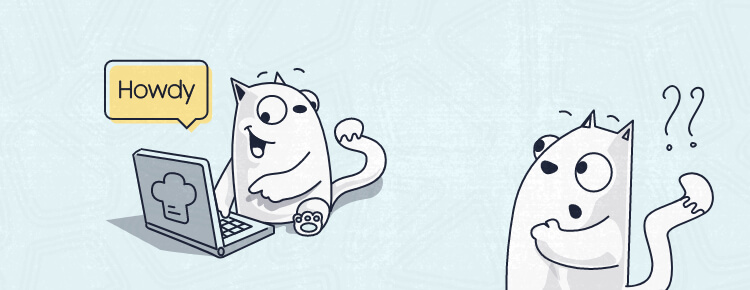
We all like to work with friendly people. But, there is a line you shouldn’t cross, at least not at the beginning. Write like you’re speaking to a person that you don’t know (which in fact you are) and you’ve just met (which in fact you have) We all know how uncomfortable it can be in a social situation when you are pinned by a stranger who wants to know your life story or worse tell you theirs. They’ve gone too far, too soon and your natural instinct is to hold back (or probably even run away).
Written communication is exactly the same. Yes, email has become more informal than standard business letter writing of the past but still, you have to be professional. If you go to the friend zone immediately, most people will be wary. So things like “Howdy”, “What’s up”, … will sound strange. Likewise, everything should be work-specific, asking about their family life is a big no-no.
The best thing you can do is to reflect your client’s style. If he’s friendly, you should be friendly, if he’s formal, answer more formally. If in doubt play safe, and go slightly more formal than informal – it’s easier to relax your style later than to try and reestablish formality.
Answer the question(s)
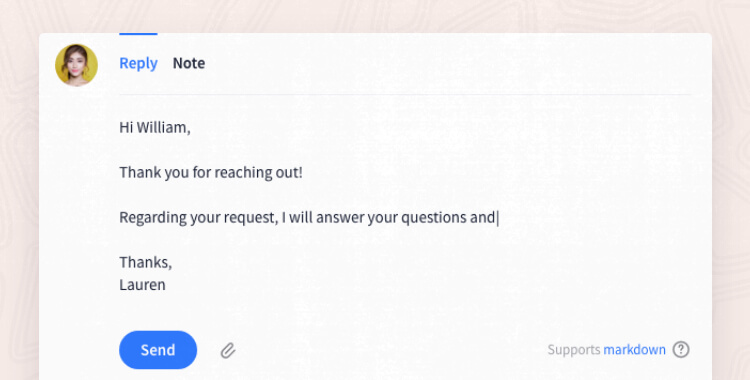
If the client asks a question or a few questions, then they want and expect answers. They’ve shouted at too many political interviews to be taken in by waffle and people avoiding the question. You should definitely answer at least a couple of their direct questions and answer directly. If they ask 10 questions, you can answer two of the most important ones and if you don’t have enough time tell him that a reply will follow in a few minutes. Again, we’re in a hurry, the competitors are preparing their replies as well. So get the ball rolling. They want answers, and you want the project.
And, ask at least one question
You’ve replied quickly, answered their questions, hit the correct style notes – is it enough?
No, it isn’t. Ask them something, at least one question. It doesn’t really matter too much what the question is as long as it’s related to the project – keep it business-centric. It could be something specific to their project – “When do you need the project completed by?”, “What’s your budget?” (this one is tricky, but useful if you get an answer), etc, or you may be more general and ask for more information.
The point here is two-fold, firstly you show interest. People love talking and writing about themselves, they want you to be as interested in them as they are.
Secondly, probably more importantly you are creating a dialogue. People feel an instinctive need to answer a question, it’s rude not to and it leaves things unfinished. Ask one or two questions maximum, don’t overwhelm them at this stage (you’ve time for that later). Questions should be short and draw out short answers, partly because you’ve more chance of getting a reply because they’ve got the time to answer and partly because then you can ask follow-up questions. Establishing back-and-forth communication, almost makes the client feel they’ve already given you the project.
A little flattery – why not
And a little flattery will help. Tell them how interesting their project looks, how it will be a thrill to work with them, they got some interesting ideas, etc. They might see through what you are doing, but it doesn’t do any harm and we all like to feel good about ourselves. Careful not to overdo it though!
Closing words
Will these tips guarantee you the project? Unfortunately not. Will these tips give you a much better chance of success? Absolutely. They are not groundbreaking psychological theory but it’s worth taking a common-sense approach and being reminded of the things that can make that vital little difference. Once you’ve got the project is up to you to keep the client onside and get those repeat projects, but let’s concentrate on getting the project first.